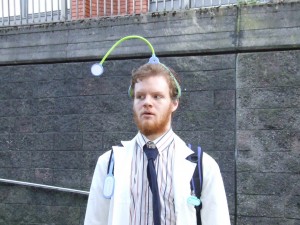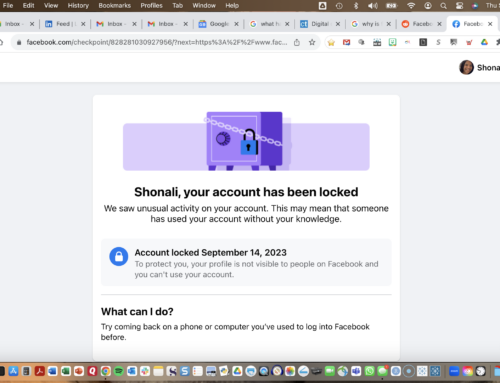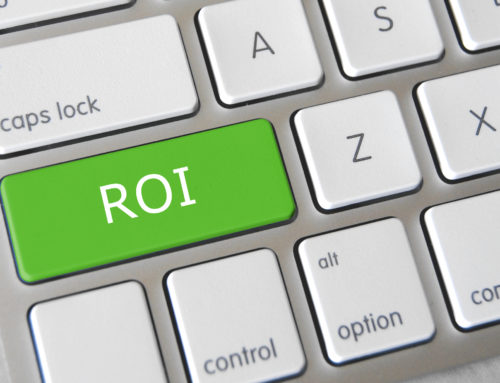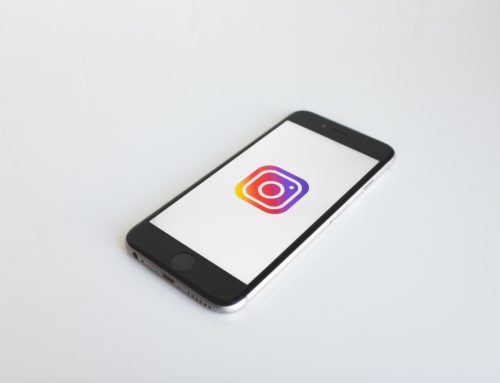Guest Post by Rachael Seda
Your child has come down with a rasping cough. You put on your Dr. Mom hat, jump online and feverishly Google their symptoms, you check social media to see if any of your friend’s children are sick. Overwhelmed by the multitude of potential diagnoses, you decide to wait and see if the cough subsides before scheduling an appointment.
But what if you could connect with your doctor using social media; asking for advice via a quick Twitter or Facebook message? Your doctor responds within 24 hours, offering some quick tips and pointing you in the direction of some credible online resources. As a parent you feel relieved, empowered and thankful to have a doctor that is open to communicating with her patients online, instead of feeling left to blindly search on WebMD.com.
But while a few doctors including Wendy Sue Swanson, MD, author of the Seattle Mama Doc blog and Natasha Burgert, MD, author of KC Kids Doc blog, are using digital communication to communicate better with their patients, according to a 2011 survey by AMN Healthcare only 8% of physicians said they use social media at work to connect with patients.
If social media and blogs in the U.S reach nearly 80% of active U.S. Internet users and represent the majority of Americans’ time online (MediaPost) then why aren’t physicians taking advantage of the opportunity to reach their patients where they already are?
Attending the session “A Dr, Patient & Insurer Walk into a Social Network“ at SxSW last year really opened my eyes to the social media obstacles healthcare professionals face. But more than anything, I was inspired by the overwhelming opportunities social media presents for transforming healthcare.
Here are three social media obstacles health care providers face and the underlying opportunities each present.
1. Risk
Obstacle: Understandably, many health care professionals may avoid using social media for fear of violating regulations like HIPPA. While maintaining patient-doctor privacy boundaries and following regulations is important, avoiding social media isn’t the solution.
Opportunity: I think a safe and easy way for doctors to use social media is to spread good health information, address common medical questions and share interesting developments in the medical world.
You may be prohibited or uncertain about engaging with patients online or via text message but you can still carefully address common concerns and help educate your patients outside of your office.
2. Education
Obstacle: Not knowing how to use social media tools or being overwhelmed by the lingo and regulations can be intimidating.
Opportunity: Providing education and opportunities for health care professionals to learn how to best use and incorporate social media in their work is an important first step to making them feel more comfortable and open to this form of communication. For example, Mayo Clinic, a pioneer in using social media in health care, launched its own Center for Social Media after so many hospitals and physicians turned to them for social media advice.
With health care lagging behind only the oil industry in regards to adopting social media, there’s an opportunity for communication and marketing professionals to pave the way, whether you work inhouse or as a consultant.
3. Time
Obstacle: Social media adds one more thing to a doctor’s already busy schedule.
Opportunity: The doctor-patient relationship (and quite frankly any relationship) relies on communication. New technology is changing how we communicate with each other, just as the telephone and email did, but faster. The sooner healthcare professionals embrace this, the better off their patients and practice will be.
“A tweet here and Facebook post there is part of practicing medicine in today’s technology-saturated society. It’s the evolution of how we communicate with each other. And I have to remind doctors that if they think they don’t have time for this””and if they don’t have instant access to mobile communications””they may be behind the learning curve and behind the times,” said Thomas Lee, MD in a U.S. News Health article.
Benefits v. costs
Overall physicians using social media have found the benefits outweigh the costs. Dr. Swanson uses her blog and YouTube videos to address common questions parents ask, allowing her to focus more time on the unique medical issues of her patients during their office visit.
As Dr. Alice Ackerman, a pediatrician and college professor from Virginia Tech University, discovered, it doesn’t take a huge following to make a difference. After a year of blogging she had an average of 4.5 readers per day.
One day a reader sent her the following tweet –
“Dr. Ackerman is the person who changed my mind once I read her blog and her links. I had no idea that info existed.”
If you only make a difference in just one person, isn’t that enough of a benefit?
Whether a doctor uses Skype to consult with a patient or creates an educational video or blog, the obstacle is insurers don’t cover the time and energy doctors put into using social media to help their patients.
If social media and technology can create healthier patients and fewer demands on the health care system, then perhaps the key to getting health care providers on board is first tackling insurance buy in.
As a communicator, how do you think social media could help transform doctor-patient communication?
Image: aeu04117 via Flickr, CC 2.0
 Rachael Seda grew up barefoot in Hawaii. Determined to find a career that put her creativity and social skills to good use, she double majored in communication and media arts and design at James Madison University and set out to do just that… and is now an Account Executive at CRT/tanaka. She shares her career experiences and journey at rachaelseda.com. Her ultimate weakness is cheese.
Rachael Seda grew up barefoot in Hawaii. Determined to find a career that put her creativity and social skills to good use, she double majored in communication and media arts and design at James Madison University and set out to do just that… and is now an Account Executive at CRT/tanaka. She shares her career experiences and journey at rachaelseda.com. Her ultimate weakness is cheese.




![[EVENT]: PR Hacks for Small Biz (online)](https://shonaliburke.com/wp-content/uploads/2021/06/FB-Ad-1200x800-01-01-01-Copy-500x383.jpeg)





When a person is in trouble, they need to http://www.doctorreview.org/ as soon as possible
but the appointment makes you wait days and even weeks. This new method of
online medical consultancy would certainly save time and energy.
[…] vacation, so we’re using some of our older-but-still-great content to keep you satisfied. This originally ran on Nov. 30, 2012. and will be particularly interesting to you if you work at the intersection of health care and […]
[…] Rachael Seda of CRT/tanaka put together a very intriguing article for Waxing UnLyrical that discusses key components of transforming doctor/patient communication via social media. Seda does a great job describing the current obstacles and the opportunities that social media present for doctors and patients. Social Media: The Key to Transforming Doctor-Patient Communication […]
@MDigitalLife Thanks for sharing!!
@jocmbarnett Thanks so much for sharing John. I really appreciate it!
Sure thing Rachael. Nice ideas on cracking socialmedia codes for health communicators. Fwded to a few health industry buddies @rachaelseda
@jocmbarnett Awesome thanks, I really do appreciate it!
@lisagerber You rock, thanks for sharing girl!
You know what? I’d love it if the doctor didn’t make me wait 1/2 hour in the waiting room before they even get on social media! Sarcasm aside, I think it would be excellent to see this industry embrace these channels. Guidelines, policies and disclaimers, I think, could circumnavigate the HIPPA issues – the concern might be over loss of revenue?
I think of my grandmother who had a serious stroke and has since been placed in a home. Or family is around the country and there are many enormous decisions to be made. Social networks whether open or closed, would be a blessing!
Lisa Gerber Thanks for commenting Lisa! I completely agree! How we communicate is changing and every industry needs to figure out how they can use this to their own benefit. I think the cost of social media would actually be much less compared to the money saved in treating and addressing patient issues more effectively.
rachaelseda Lisa Gerber I thought of you this morning when I heard this: http://www.npr.org/blogs/health/2012/12/03/166241115/social-media-helps-diabetes-patients-and-drugmakers-connect
You’re starting a trend and NPR has picked up on it!
Lisa Gerber Thanks so much for sharing. Great info, I particularly love this quote “”Getting involved in social media is a critical component of serving the diabetes community,” says Urbaniak” woot woot!
@annelizhannan thank you for sharing Anneliz!!
Good post Rachael. As a doc well-immersed in social media for my other interests in life, I can see the great potential that lies ahead for expansion.
Two other issues that you have not brought up still concern me though. Yhe first is that many docs don’t work for themselves, they are employed. They must therefore convince their employers of that age old question, “what’s the ROI?” How much will it cost the employer, who is going to do it,and how will it be billed.
The second is a little thornier. HIPAA is a valid concern, and can be handled with adequate encryption, I think. But the fact is that we live in a litigious age. Once again, what’s your exposure when things go wrong? These are matters which will have to be sorted out by legislation and the insurance carriers.
Good post, and I look forward to watching it evolve to catch up with the rest of the world.
Martina McGowan Thanks for commenting Martina! Yes as I was telling @mdbarber HIPPA is definitely something that is a concern but as you mentioned it can be addressed and many doctors are using social media while abiding by HIPPA.
You’re right many doctors don’t work for themselves. My thought is…if enough doctors start to realize the importance of social media and how it can be used in their work, soon the healthcare system will need to catch up. Yes ROI is always important and this is going to be a valid point to make among insurance carriers and health systems. It will no doubt be interesting to see how it unravels in the next year, two years and decade.
Thanks again for the comment!
rachaelseda mdbarber — you might find this video about telemedicine provider NuPhysicia interesting. These guys provide medical services for oil rig workers and the Texas State Prison system. Pretty impressive. Eventually, health care will be a 24-hour service, and for most services you’ll be treated by doctors in remote locations. Like MD says, it will be really interesting to see this grow.
@mdbarber You rock, thanks for sharing my post with @PRSAHealth and friends!
Interesting Post and commentary. As a long-time health care communicator, I’d say that the train has left the station. More and more hospitals and doctors are adopting use of traditional social media such as Facebook and Twitter, and the vendors of the many Electronic Medical Record companies have components that foster hipaa compliant physician-consumer relations.
I work at Franciscan St. Francis and we use the EMR – EPIC – which has a component called “My Chart” –
https://mychart.ssfhs.org/ –
If you’re not familiar with how hospitals and doctors are using social media, I might recommend a blogger by the name of Ed Bennett who does a blog called – Found In Cache – at
http://ebennett.org/
Among his other efforts, He’s been working on a collection of hospitals’ use of social media, which moved to the Mayo Clinic Center of Social Media in September –
http://socialmedia.mayoclinic.org/
Leave it to the Mayo Clinic to be the leader in this area….
Have fun!
Fred
Frederick C. Bagg, ABC, APR, Fellow PRSA
Director of Strategic Planning, Franciscan St. Francis Health
Great post Rachel. I’ve actually had this conversation with several providers and hope some who specialize in health care PR will weigh in as well. The problem is HIPPA but it’s also a concern about wrong diagnoses and the threat of malpractice. Many are afraid to dispense advice when they haven’t actually examined the patient. At the same time, we’re starting to see some movement in these areas, and I believe that will only grow as communication changes.
For example, here in Alaska many dental and medical providers offering tele-medicine to rural providers. This type of service is often life-saving here as it’s often the only way services can be provided to these small regions.
It’s going to be interesting to watch the growth and changes in this part of the field.
mdbarber Thanks for commenting Mary. Yes HIPPA is indeed a concern but I believe there is a way to use social media that helps your patients and doesn’t violate HIPPA. I think there’s a big difference between being able to contact your healthcare provider in a different manner (just as say you would on the phone) and offering advice without even seeing the patient.
That’s great that doctors in your area offer tele-medicine to rural areas. Thanks again for sharing and commenting!
[…] excerpt FROM: https://shonaliburke.com/2012/11/30/social-media-the-key-to-transforming-doctor-patient-commun… […]
Great post Rachael! I know if I could communicate with my doctors via social media, I’d be way less of the hypochondriac I am now!
@Melissa Thanks for the comment Melissa! For me I think it would just be much more convenient!
[…] healthcare professionals face. But more than anything, I was inspired by the …… Read more… via Original Post TweetSEEd Medical Publishers liked this post Updated: November 30, 2012 at […]